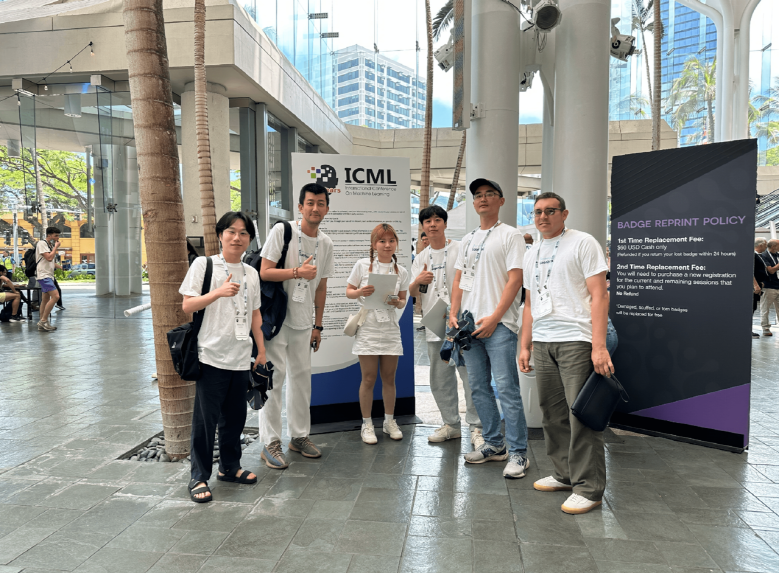The summer 2025 fashion landscape extends far beyond mere styling, presenting a revolutionary paradigm where sustainability and innovative technology converge harmoniously. With 60% of consumers now prioritizing sustainability and innovation over brand loyalty, the fashion industry is actively pursuing groundbreaking solutions that seamlessly blend environmental consciousness with cutting-edge technological advancement.
Color Trends: Nature-Inspired Warm Palettes
The Rise of Yellow Hues
This summer's most captivating color trend is undoubtedly the yellow spectrum. Vanilla yellow is projected to rise by 11% from April to June compared to previous years, while saffron yellow shows a 6% increase. These warm, radiant tones reflect consumers' psychological desire to express hope and vitality amid economic uncertainties.
Sustained Popularity of Soft Pink
Soft, sugar-like pink tones emerge as the season's biggest color trend, serving as a palate cleanser against the deep hues that dominated previous months. This shift represents consumers' yearning for simple, pure beauty as an escape from complex realities.




Green Color Variations
The green trend continues to evolve beyond the "Brat Summer" phenomenon, with emerald, pistachio, and olive green gaining runway approval. These natural-inspired hues perfectly align with the sustainability movement sweeping through the fashion industry.








Sustainability: From Choice to Necessity
Mainstream Adoption of Eco-Friendly Materials
GOTS-certified organic cotton, plant-based Tencel, and hemp textiles have become central to SS25 collections. These innovative materials deliver comfort and quality while minimizing environmental impact, representing a fundamental shift in fashion production values.
On-Demand Manufacturing Revolution
Addressing the fashion industry's chronic overproduction problem, on-demand manufacturing emerges as a transformative trend gaining significant momentum in 2025. Companies like Unspun are revolutionizing the manufacturing process with 3D technology that enables clothes to be produced directly from yarn, dramatically reducing waste and inventory challenges.
Regulatory Impact on Sustainable Practices
New legislation including textile destruction bans and circularity improvement mandates is driving brands toward greater environmental responsibility. These regulatory measures, combined with innovative solutions like eco-friendly dyes and advanced recycling technologies, offer promising pathways for waste reduction and circular fashion ecosystem development.


Style Trends: Meaningful Minimalism
Reinterpretation of Sheer and Lace
Major brands including Brandon Maxwell, Courrèges, and Gucci heavily feature lace in their collections, with bohemian fashion being reinterpreted through a luxury lens. Sheer fabrics evolve beyond mere transparency to emphasize movement and flow, creating ethereal experiences through gossamer-light silks and diaphanous materials.




Aquatic Influences Take Center Stage
Turquoise color shows an 8% increase compared to previous summer seasons, while mermaid-inspired elements like sequins and fishtail maxi dresses are expected to grow by 20% and 17% respectively. This aquatic trend reflects modern consumers' desire to reconnect with nature and embrace oceanic aesthetics through nautical styling, fisherman sandals, and seashell jewelry.





The Return of Hot Pants
Hot pants emerge as the new alternative to mini skirts, with a projected 7% increase from April to June 2025 compared to previous years. Featured in various fabrics including cotton, knit, sequin, denim, and leather, this versatile silhouette can be styled with everything from party tops to cozy knitted cardigans.
Polka Dots: Timeless Meets Trendy
As Carolina Herrera demonstrated with classic black-and-white patterns across matching sets, crochet dresses, and accessories, polka dots represent the perfect balance between timeless appeal and contemporary relevance. The pattern embodies the season's philosophy of working smarter, not harder.
Technology Innovation Meets Fashion
AI-Powered Content Creation Revolution
Fashion brands are increasingly adopting AI-based solutions to overcome traditional photography limitations. LaonGEN's AI-powered fashion photography technology can generate diverse lookbook styles within 3 hours using only garment images, achieving 80% cost reduction and 10x faster production speeds compared to conventional methods.
This technological advancement addresses the fashion industry's core challenges: high production costs, dependence on professional personnel, limited access to studio and equipment infrastructure, and complex collaboration and scheduling coordination.
Video Commerce Growth
Video commerce emerges as a pivotal innovation area, enabling brands to create more engaging, interactive shopping experiences. This technology provides immersive shopping experiences that boost engagement, offers detailed product views and demonstrations, enables real-time brand-consumer interaction, and significantly increases conversion rates compared to static images.
Digital Platform Transformation
According to Yotpo research, nearly half (47.5%) of US online fashion shoppers report that social media influenced their most recent online fashion purchase. This statistic underscores the critical importance of digital platform optimization and social media integration in modern fashion marketing strategies.
Future Outlook: The Beginning of Meaningful Change
The core philosophy underlying 2025 summer trends is "meaningful minimalism" – pieces with thoughtful, functional details that achieve more with less. This approach prioritizes sustainable and practical value over mere novelty, responding to consumers' evolving demands for responsible fashion consumption.
The fashion industry is no longer solely dependent on rapid change and mass production. Instead, it's building new business models that combine technological innovation with environmental responsibility. Through advanced AI-powered content creation, sustainable material innovation, and circular economy principles, the industry is establishing foundations for long-term viability.
The Role of AI in Sustainable Fashion
LaonGEN's innovative approach exemplifies how AI technology can support sustainability goals. By eliminating the need for traditional photoshoots – which require models, studios, stylists, and extensive travel – AI-powered fashion photography significantly reduces the industry's carbon footprint while maintaining creative excellence.
The platform's ability to generate diverse style variations, backgrounds, and model representations from a single garment image democratizes high-quality fashion content creation, making it accessible to brands of all sizes while promoting more sustainable production practices.
Industry Transformation and Consumer Behavior
Shift from Fast to Slow Fashion
Consumer preferences are rapidly evolving toward sustainable practices and eco-friendly materials. Brands like Patagonia have successfully pioneered approaches that encourage repair over replacement, setting new standards for industry responsibility.
Diversity and Inclusivity Imperatives
Companies showcasing more inclusive collections and making inclusivity central to their mission are gaining competitive advantages. This trend extends beyond marketing to encompass internal operations and supply chain practices.
Evolving Influencer Marketing Landscape
The global influencer marketing platform market is projected to exceed $337 million by 2027, reflecting the continued importance of authentic brand-consumer connections in digital environments.
Conclusion: A Sustainable Fashion Future
Summer 2025 fashion trends represent more than seasonal style updates – they signify the beginning of systemic industry transformation. The perfect harmony of style and sustainability, innovation and tradition demonstrated this season provides a blueprint for the fashion industry's future direction.
As brands navigate economic uncertainties while meeting evolving consumer expectations for environmental responsibility, those that successfully balance technological innovation with sustainability goals, embrace diversity, and create exceptional digital experiences will thrive in this evolving landscape.
The integration of AI technology, sustainable materials, and circular economy principles positions the fashion industry for a future where creativity and responsibility coexist, proving that innovation and environmental consciousness are not competing priorities but complementary forces driving positive change.
Preview in Seoul 2025: AI Technology Transforms Fashion Industry
Revolutionary Changes in Fashion Content CreationPreview in Seoul (PIS) 2025 marks a significant milestone in fashion industry innovation. The integration of AI technology into Korea's leading textile and fashion trade show represents revolutionary changes
blogen.laongen.com
Studio-Free, Professional Quality? Complete Analysis of LaonGEN AI Lookbook Creation Process
Revolutionary Approach to Fashion Content CreationThe fashion industry is witnessing a paradigm shift in visual content creation, with AI-powered photography solutions leading the charge. LaonGEN, an innovative AI fashion photography platform, is revolutio
blogen.laongen.com
Studio-Quality Fashion Photography Without the Studio: Real LaonGEN AI Test Results
The fashion industry has been buzzing about AI-generated fashion photography, and LaonGEN has emerged as one of the most promising solutions in this space. When we received a client request to test LaonGEN's capabilities with random garment photos, we jump
blogen.laongen.com


